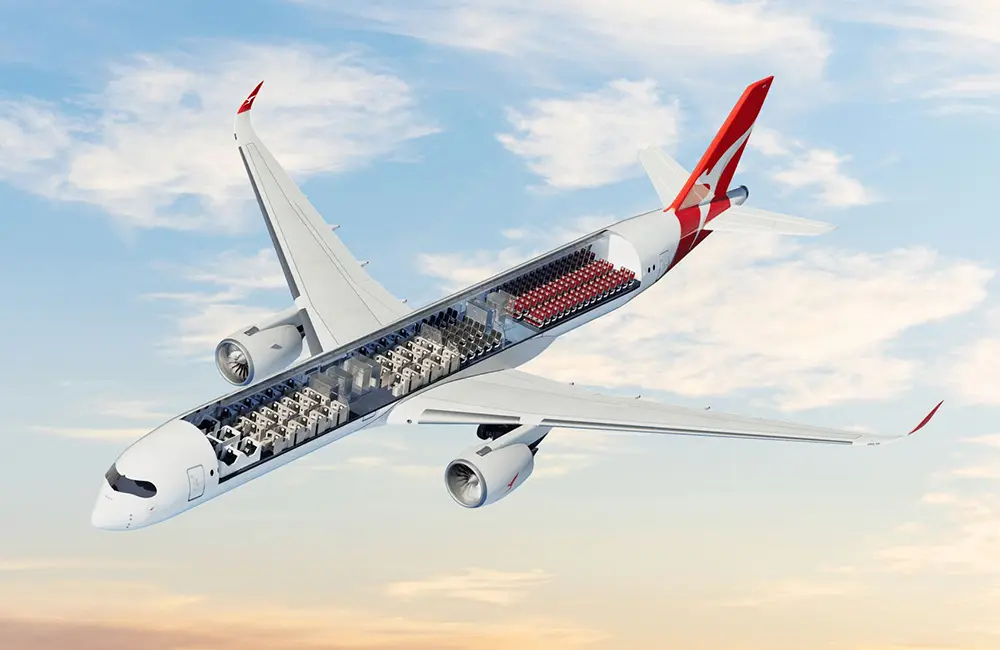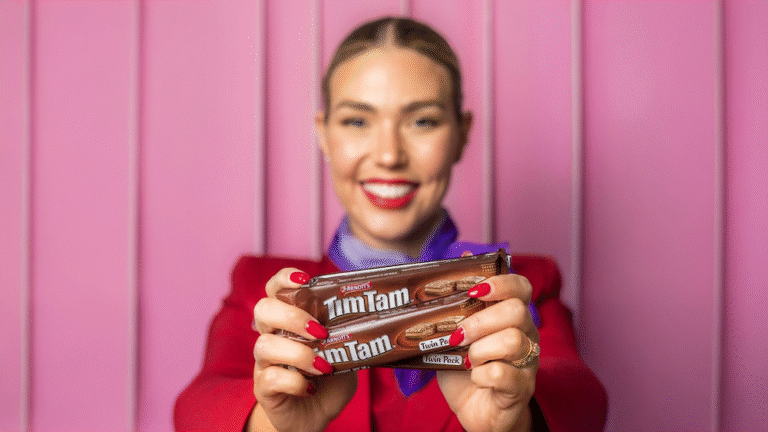Last week, Qantas shared a first look at its first exclusively configured ultra-long-haul A350-1000ULR aircraft being assembled at Airbus’ Toulouse facility, marking a concrete step toward Project Sunrise, the national carrier’s boldest long-haul ambition yet.
Eight years in the making, Qantas and Airbus released the first images of their first Project Sunrise aircraft on the final assembly line, showing key airframe sections coming together and the distinctive Red Roo now emblazoned on the wingtips.
Tagged ‘#Ultimate #LongRangeLeader’, the big bird will next receive its engines and flight test instrumentation, ahead of receiving its final livery and an extensive testing program towards launching the world’s longest commercial flight for what QF rightly states will be, “a new dawn of travel.”
According to Qantas, the first of 12 aircraft is scheduled for delivery in late 2026, with commercial services expected to launch in the first half of 2027.
What does this mean for travel advisors?

This milestone moment gives travel advisors a renewed reason to engage clients around Qantas’ most ambitious long-haul product yet. The aircraft is designed to fly nonstop for up to 22 hours, connecting Sydney to London (LHR) and New York (JFK) without any layover or stopover.
For premium, corporate, and high-end leisure clients in particular, that means a faster, smoother journey and significant time savings. Qantas estimates the direct route will shave up to four hours off existing one-stop services.
For advisors, this creates new sales hooks: conversations can shift from “how to break up a long haul journey” to “how to arrive faster and feel better doing it.” The service will target discerning travellers for whom schedule efficiency, wellness, and privacy are top priorities.
It will also potentially reclaim Qantas’ premium positioning against Gulf carriers and Asian competitors that currently dominate ultra-long-haul and stopover connections into Europe and North America.
What about the cabins?

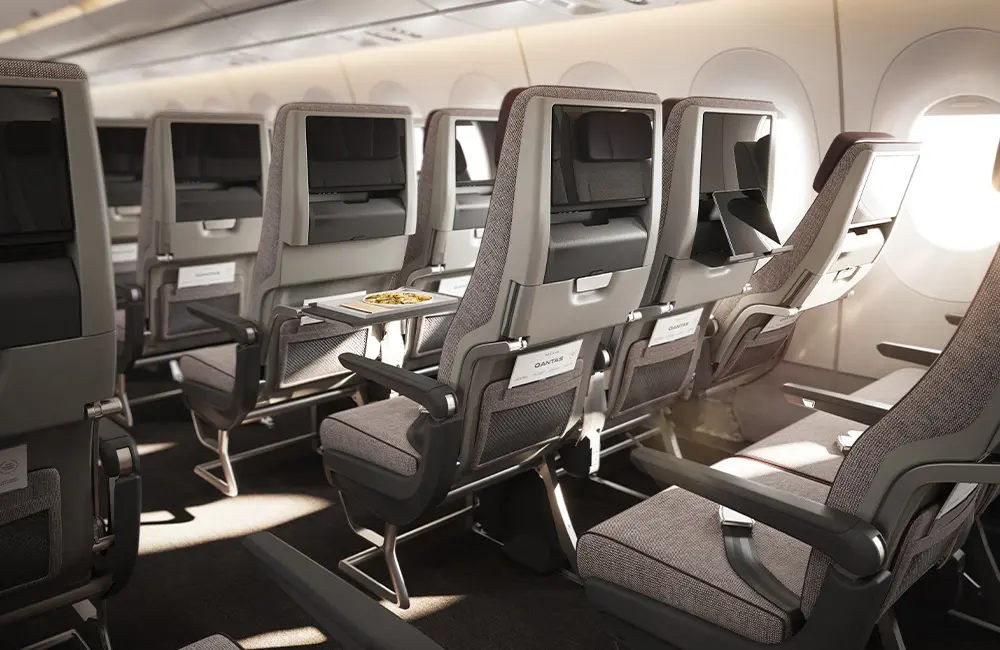

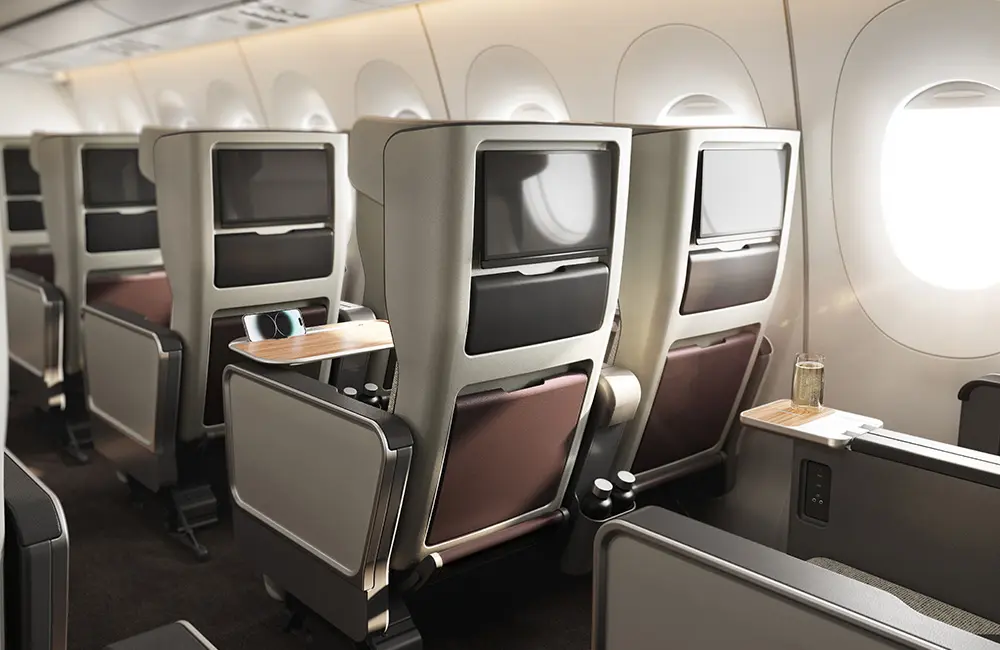
The proposed in-cabin difference will be a major talking point. Qantas says the 238-seat configuration will prioritise “personal space and passenger health”. A purpose-built Wellbeing Zone, located between Premium Economy and Economy, will reportedly include guided on-screen stretching exercises, movement prompts, and a hydration station. Check out the Wellbeing Zone here.
In collaboration with industrial designer David Caon and the University of Sydney’s Charles Perkins Centre, Qantas says it has focused on lighting and meal timing to support circadian rhythms and help reduce jet lag, positioning this flight as a scientifically informed, health-forward journey rather than a test of endurance.
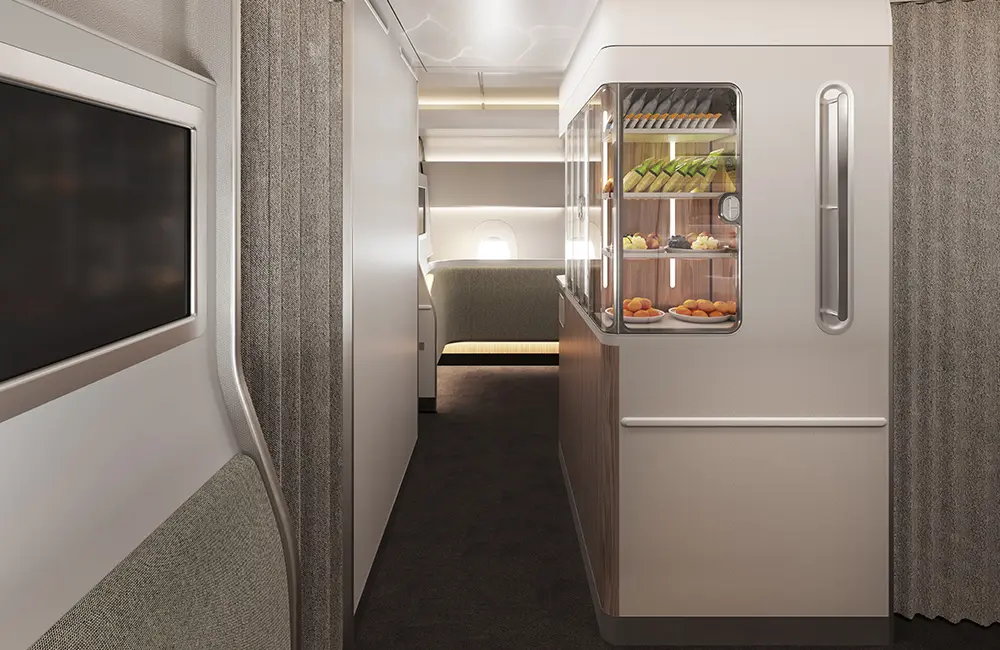
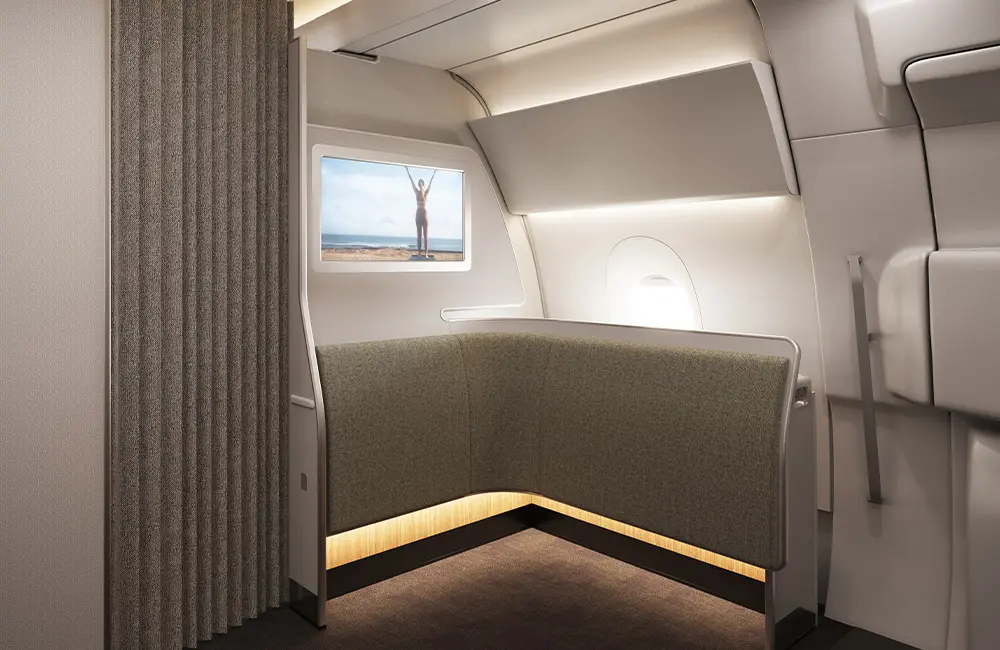
In development since 2019, the 40-seat Premium Economy cabin and 140-seat Economy cabin will feature the largest seat pitches of any QF aircraft, along with special ergonomic leg and footrest systems, multiple fast USB-C charging ports (with wireless charging available for premium seats), and fleet-leading, fast, and (notably) free Wi-Fi with Bluetooth connectivity. However, facing a 22-hour flight in economy will still be a big question mark for many.
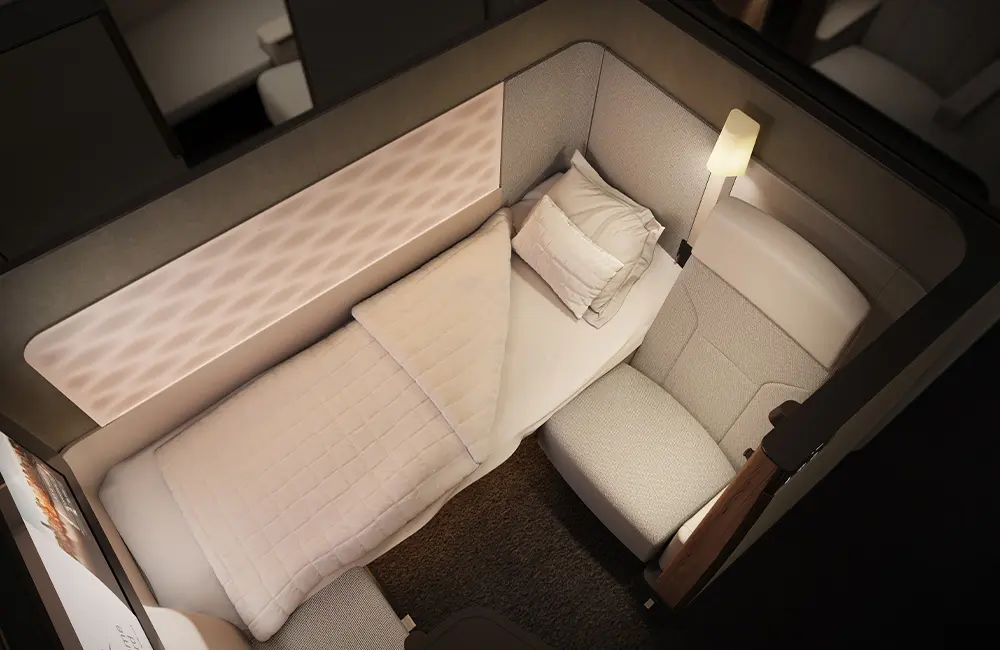
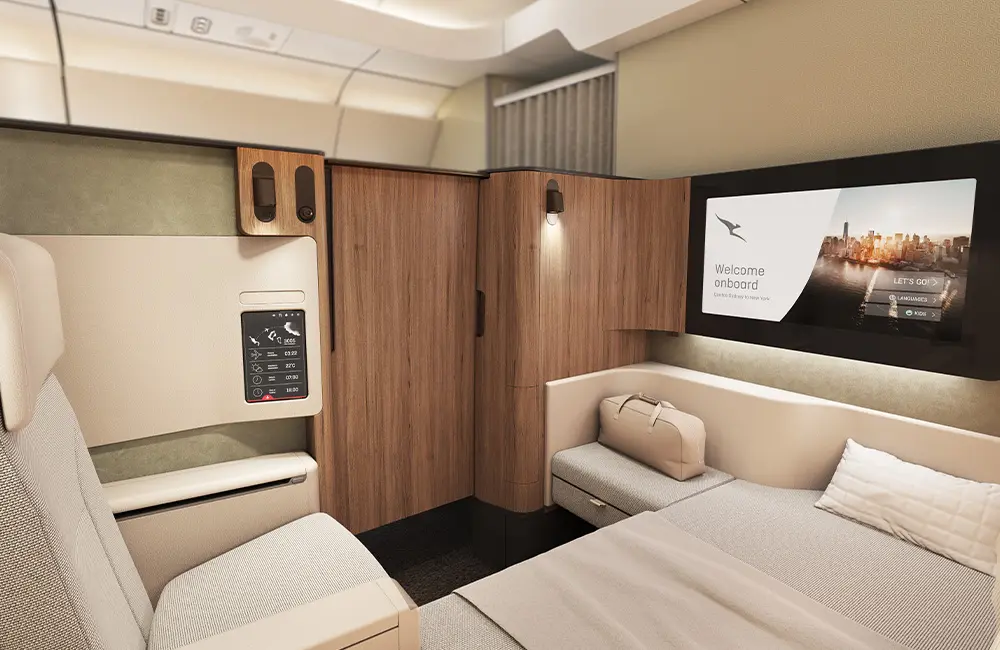

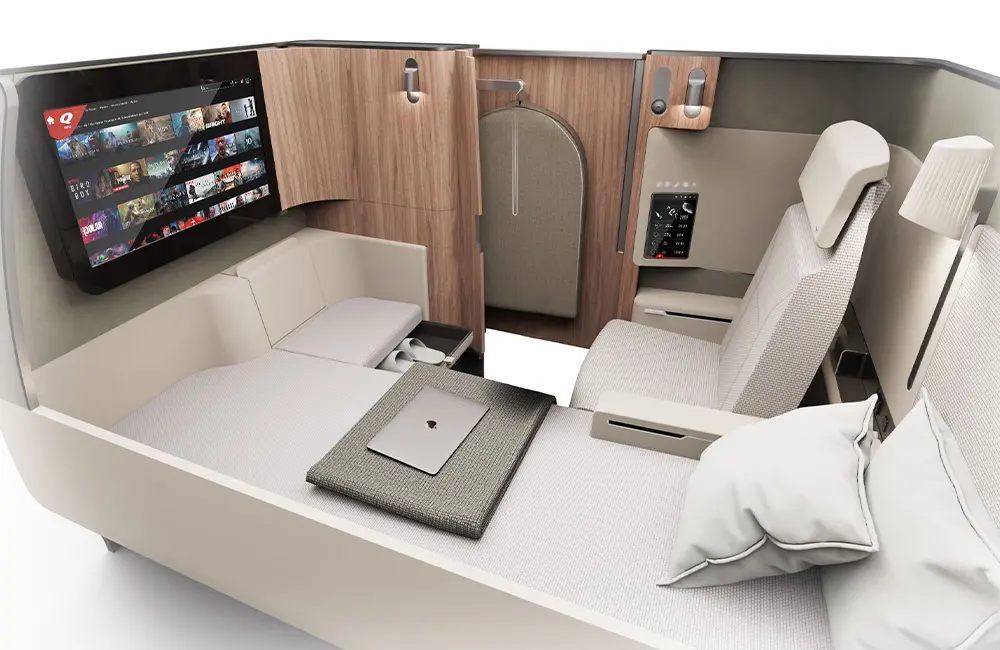

Beyond the curtains, up at the pointy end of the aircraft, there are likely to be fewer concerns about the length of the flight.
Examining the supplied images, the six First Suites look enormous and evoke a cool, mini-hotel room feel, embodying the epitome of mile-high style. Privileged first folk in here will be able to cocoon themselves privately for the trip, stretching out on a two-metre bed, enjoying dining at a table for two, relaxing in a separate recliner chair, and watching a 32-inch ultra-high-definition touch-screen TV.
In Business, fifty-two Suites will feature sliding doors for privacy, flat beds, large dining tables for work or culinary pleasure, bespoke lighting, and 18-inch ultra-HD touch-screen TVs. Take a closer look here.
How does this compare to the longest flights currently operating?
Project Sunrise aims to surpass all current commercial services in terms of distance and duration. Today’s top three longest scheduled flights are:
- Singapore Airlines (SQ) SQ23: Singapore (SIN) to New York (JFK) — approximately 15,349 km, around 18 hours 40 minutes
- Singapore Airlines (SQ) SQ37: Singapore (SIN) to Los Angeles (LAX) — approximately 14,113 km, around 17 hours 50 minutes
- Emirates (EK) EK449: Auckland (AKL) to Dubai (DXB) — approximately 14,200 km, around 17 hours 15 minutes
Qantas plans to push that benchmark even further. The Sydney to London route will cover nearly 17,000 km, with projected flight times of up to 22 hours, making it the longest commercial flight in the world by both distance and duration. For advisors, this creates a distinctive sales advantage: a product that clients cannot obtain anywhere else.
What’s changed, and what should advisors know about delays to the project?

Project Sunrise was named in honour of Qantas’ famed ‘Double Sunrise’ endurance flights across the Indian Ocean during the Second World War, which remained airborne long enough to see two sunrises.
The project was initially flagged in 2017 with an ambitious target of launching by 2022, though the exact phrasing indicated a broader time horizon rather than a firm commitment.
At the time, Qantas Group CEO Alan Joyce challenged Airbus and Boeing to deliver an aircraft capable of the proposed 20-hour-plus long-haul journeys to cities including London, Paris, New York, and Rio de Janeiro.
By late November 2019, the project had made significant progress. Qantas had completed three passenger-free research flights, including Sydney to New York return and one flying from London to Sydney on a 17,800 km journey that took 19 hours 19 minutes.
Then the pandemic happened.
By May 2022, the plan was back on the table, with Joyce confirming Qantas had chosen the A350 as its preferred aircraft and a formal order of 12 Airbus A350‑1000ULRs for Project Sunrise, stating that the non-stop services would begin from late 2025.
But not so fast. By September 2023, Joyce had resigned, and in early 2024, Airbus confirmed that additional time was needed to redesign the aircraft’s centre fuel tank, a crucial feature that enables ultra-long-haul operations.
Qantas now expects the first aircraft delivery in late 2026, with the first flights launching commercially in the first half of 2027. In a recent statement, Qantas Group CEO Vanessa Hudson reiterated that the project remains central to Qantas’ future network strategy.
“Given Australia’s position in the world, Qantas has a long history of breaking aviation barriers. Project Sunrise will not only overcome the tyranny of distance, it will fundamentally change the way our customers travel the world.”
“These flights will cut up to four hours off the journey and transform how people experience ultra long‑haul travel, through science backed design to minimise jetlag and maximise wellbeing.”
For advisors, the extended timeline offers a chance to build awareness early, position the product as a future-ready option, and prepare clients already looking ahead to 2027 long haul travel.
Why does this matter?
For the travel trade, Project Sunrise is more than just an aircraft update. It marks a historic shift in how Australian long-haul travel is marketed and sold. The potential to bypass international hubs, arrive faster, and experience less jet lag directly addresses premium client needs.
The limited seat count, wellbeing-first design and tailored in-flight services also signal a repositioning of ultra-long-haul travel from a compromise to a competitive edge.
Agents who are ready to discuss wellness, productivity, privacy, and premium service will be best positioned to convert early demand and differentiate themselves from traditional stopover models.
All that said, how Qantas positions pricing for what is undoubtedly a premium, one-of-a-kind experience remains to be seen. Given the strong demand for its existing 17-hour-plus non-stop Perth to London, Paris and Rome flights, will travellers pay even more to skip the stop entirely for a 22-hour sector from the East Coast?
KARRYON UNPACKS: For advisors, Qantas’ Project Sunrise milestone is more than a production update; it signals a rare opportunity to lead the conversation on what next-generation premium long-haul flying can look like and how to sell it.


